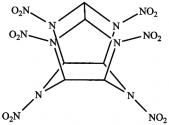HOLY MOLY, a solid fuel that's 51% CL-20?!Some digging work on possible propellant for third stage engine:
Patent filed by CASC 42 Institute says that it developed a GAP/CL-20/AlH3 propellant, theoretical Isp 2790.40 Ns/kg, density 1.80g/cm3
To give you an idea how insanely powerful it is, it means Isp 271s at sea level in reality and Isp >311s in the vacuum, an Isp on par with liquid pbv used by US and Soviet.
In comparison with hypergolic engine:
RD-270, the most powerful hypergolic ever built, has an Isp 322s in the vacuum.
RD-869, MIRV bus used by R36M, has an Isp around 311s-313s in the vacuum.
View attachment 101356
However, it is too expensive and sophisticated to produce, its annual production is around 10t/a and a price tag of 60,000RMB/kg. CL-20 production is not high either, only around 27t/a. The real production rate of such propellant is around 50-60t/a with consideration of two important ingredient in mind, so it will be enough for 10 DF-41 or 5 DF-45 per year.
Too expensive and unnecessary for other purposes. Ofc you can use AlH3 for solid battery if you want to pay for 60,000RMB/kg for a car battery product. One 10t/a AlH3 production line costs 278 million RMB to build, no one is going to waste that money on it without clear prospect.
AFAIK, another company is currently auctioning for AlH3 production line, 10t/a in initial investment and another 30t/a in the future. It will increase AlH3 production for 4 times, to 25 DF-45s/50 DF-41s in total per yer. It could be higher if there is other undisclosed production expansion on the way.
For those not aware, here's a skeletal formula of CL-20, aka hexanitrohexaazaisowurtzitane

Do you see just how many nitrogen is inside this baby? Every single one of them is just dying to break out of that molecule that by all account shouldn't exist and combine with another single nitrogen into tripled bonded red hot nitrogen gas molecule.
The ability to beat the crap out of a molecule to add that many nitro group to it, at a industrial scale and handle it so it's stable enough for use in rockets all without blowing yourself up is tremendous technological achievement.
